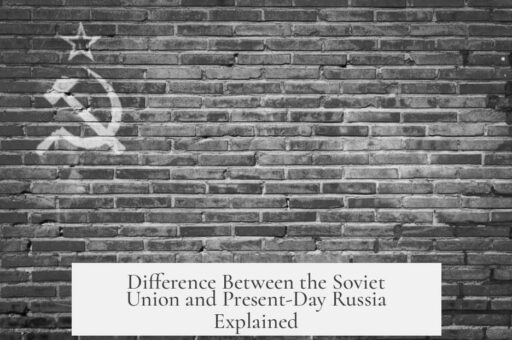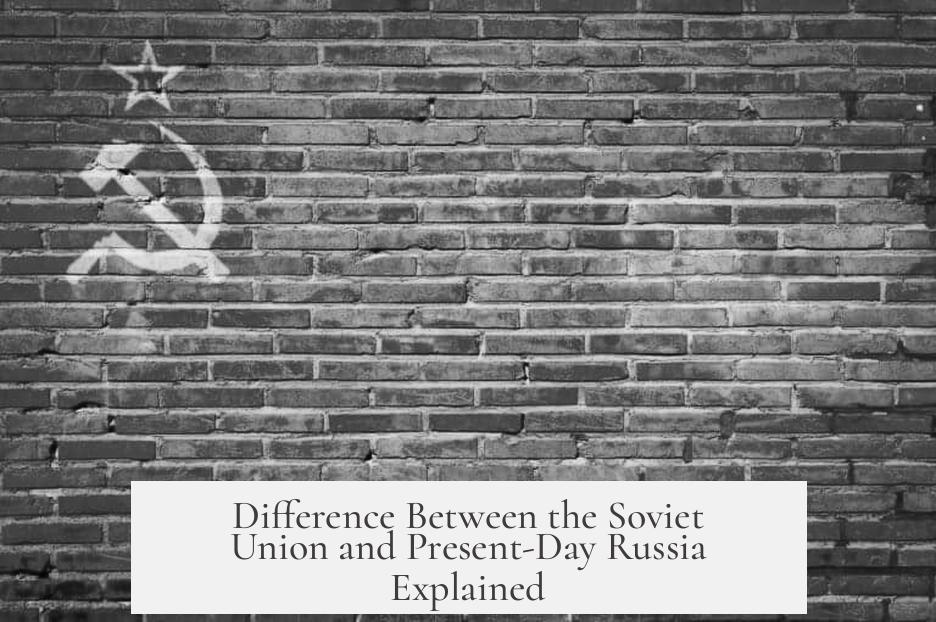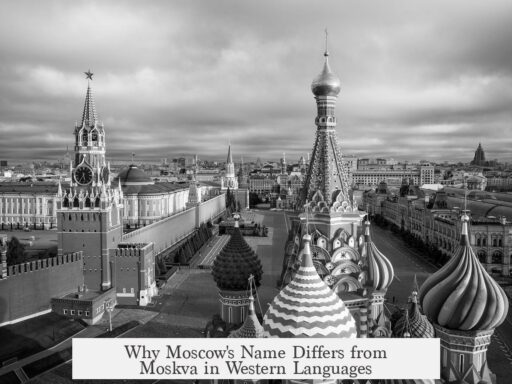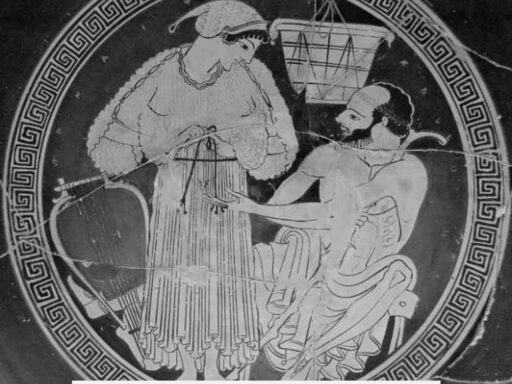The difference between the Soviet Union and Russia lies primarily in their political structure, ethnic composition, and historical context. The Soviet Union was a multi-ethnic federation of republics organized under a communist system, whereas Russia is a single nation-state that emerged as its largest successor with a predominantly Russian ethnic identity.
The USSR, or the Union of Soviet Socialist Republics, was a federation of bureaucratic entities. It included Soviet Socialist Republics (SSRs), oblasts, autonomous zones, and other administrative units. These units were drawn based on ethnicity, as determined by Moscow, intending to provide many ethnic groups with their own homelands within the USSR. This ethnic structuring set the USSR apart from a typical nation-state.
The Russian Soviet Federated Socialist Republic (RSFSR) was the largest SSR, home mostly to the Great Russian ethnic group. It accounted for roughly 40% to 50% of the entire USSR’s population. The term “Great Russians” refers specifically to this ethnic majority, distinct from the political or geographic concept of Russia. The RSFSR was just one of many republics within the USSR, rather than the innately dominant state.
The Soviet Union was ethnically diverse, composed of groups such as Ukrainians, Kazakhs, Armenians, and many others. Soviet policies often aimed to limit Great Russian dominance within this multi-ethnic federation. For example, internal borders were drawn to territorialize ethnicity. Republics were led by their titular ethnicities. The state promoted local languages and cultures and countered Great Russian chauvinism through policies like korenizatsiia (indigenization). This policy encouraged the elevation of native party cadres loyal to the USSR rather than solely to Russian interests.
Several supranational institutions operated across the entire USSR. The Communist Party, Komsomol (youth organization), and Red Army functioned as unifying forces above ethnic lines. The planned economy redistributed industrial and agricultural resources among republics, sometimes disadvantaging the RSFSR relative to others. This balancing act reflected the Soviet commitment to managing ethnic diversity within a single federal system.
Many Cold War-era commentators mistakenly equated the USSR with “Soviet Russia,” implying it was merely the continuation of the Russian Empire under communist rule. This interpretation suggested that Great Russian ethnicity dominated Soviet politics and culture. However, extensive historical research post-1991 shows this view is overly simplistic and inaccurate. The USSR’s ethnic policies and federal structure were consciously different from a mono-ethnic empire.
Calling the USSR “Soviet Russia” ignores the actual complexity of Soviet history and undermines the distinct experiences of non-Russian ethnic groups. It also misrepresents the Soviet Union’s attempt to manage diversity through legal and cultural mechanisms. Today, using the phrase “Soviet Russia” often signals a lack of understanding about the USSR’s true nature and ethnic federation.
Russia, as it exists today, is a single federal state and the main successor of the Soviet Union after its dissolution in 1991. It is much more ethnically homogenous relative to the Soviet Union, with Russians comprising the overwhelming majority of the population. In contrast, the USSR was an enormous multi-national state, unified by communist ideology but fragmented along ethnic and republican lines.
| Aspect | Soviet Union (USSR) | Russia |
|---|---|---|
| Political Structure | Union of multiple republics and ethnic entities | Single federal state with centralized government |
| Ethnic Composition | Highly diverse; multiple ethnic republics | Predominantly ethnic Russians |
| Leadership & Policy | Communist Party with policies of indigenization and ethnic federalism | Now governed as a national state with Russian ethnic predominance |
| Geographic Size | Spanned Eastern Europe, Central Asia, and more | Primarily the RSFSR territory |
Understanding the difference between the Soviet Union and Russia requires recognizing the USSR as a multi-ethnic, multi-national system, not just “Soviet Russia.” Its ethnic republics, cultural policies, and supranational institutions distinguish it sharply from modern Russia.
- The USSR was a federation of many ethnic republics, not just Russia.
- Great Russians were a large but not absolute majority in the USSR.
- The USSR promoted ethnic diversity through policies like korenizatsiia.
- “Soviet Russia” is often a misleading Cold War-era term lacking nuance.
- Russia today is primarily a nation-state and successor of the RSFSR.
What Is the Difference Between the Soviet Union and Russia?
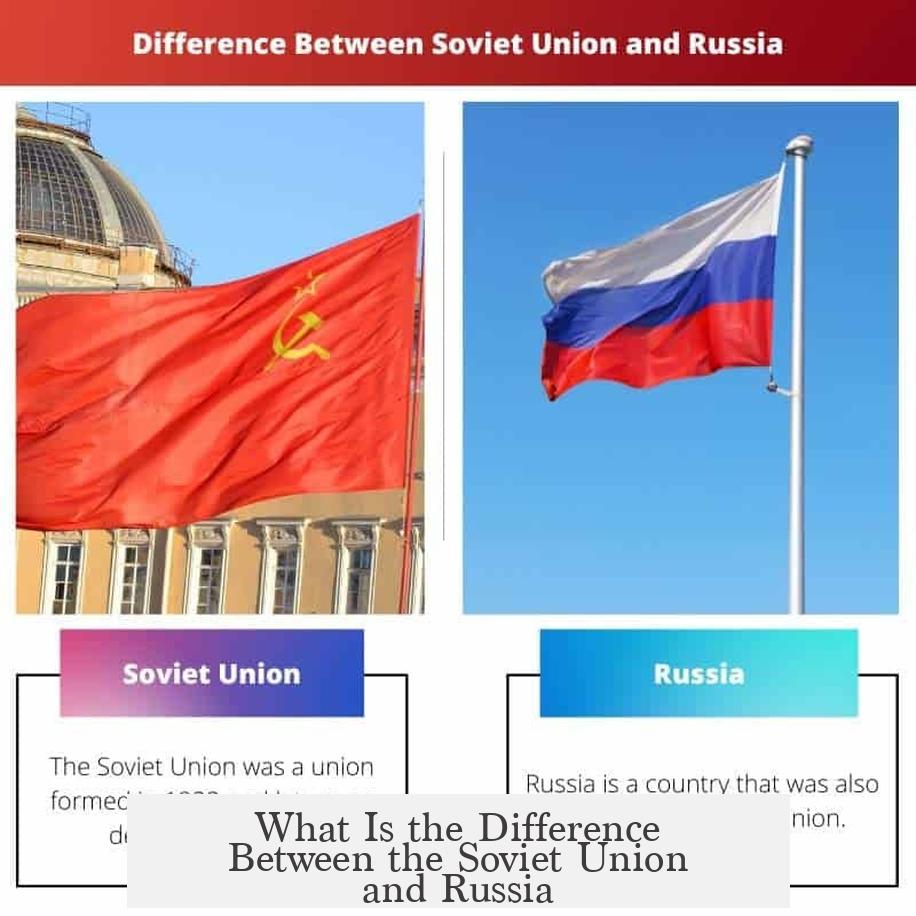
To put it simply, the Soviet Union (USSR) was a multi-ethnic federation of states, while Russia is just one of those states—the largest, yes, but still just one player in the Soviet game. Let’s unpack that a bit because these two terms often get tangled up in conversation, history books, and political discussions alike.
First, the Soviet Union wasn’t just “Russia with a fancier name.” It was a complex political entity made up of several bureaucratic pieces: republics, oblasts, autonomous zones, and more. These were not random chunks of territory; rather, they were drawn largely based on ethnicity. Moscow’s idea was to give different ethnic groups their own “homelands” within the bigger Soviet umbrella. Imagine a giant patchwork quilt where each patch represented a distinct ethnicity.
The USSR: A Federation of Many Ethnicities
At the heart of the USSR’s structure were the Soviet Socialist Republics or SSRs. There were 15 main republics, including Ukraine, Kazakhstan, Belarus—and, of course, Russia itself, officially called the Russian Soviet Federated Socialist Republic (RSFSR). The RSFSR was the largest SSR by far, home mostly to the Great Russians. That term “Great Russians” is important; it refers to the ethnic Russian population, not the whole Russian geographical state. This distinction is a bit clearer in the Russian language, though often lost in translation.
Here’s a surprising fact—despite Russia’s size, Great Russians made up only about 40% to 50% of the total USSR population. The rest were Ukrainians, Kazakhs, Uzbeks, Armenians and many others. The Soviet Union truly was a multi-ethnic state, with a dizzying diversity of languages, customs, and histories.
Ethnic Policies: Not Always a Russian Favor
And here’s a twist—many Soviet policies actually *worked against* the interests of Great Russians. When the USSR drew internal borders, it deliberately “territorialized ethnicity.” This means it carved out territories for different groups to lead their own republics, with their native language and culture getting official support. The policy of “korenizatsiia,” or indigenization, aimed to install local cadres loyal to the Communist Party—not just Russification.
Sounds almost counterintuitive, right? You might expect the biggest ethnic group to dominate all, but the USSR tried to keep the ethnic balance visibly fair. Early on, the government even cracked down on Great Russian chauvinism. It sponsored local languages and cultural events, especially in republics like Ukraine and the Caucasus. Moscow wanted loyalty to the USSR, but it wanted that loyalty expressed through ethnic diversity, not homogenization.
Moreover, major Soviet institutions like the Communist Party, the Komsomol, and the Red Army acted as supranational entities that transcended ethnic lines. The planned economy redistributed industrial resources across the USSR, sometimes leaving the Russian heartland less favored. So, the idea that the Soviet Union always privileged Russia simply isn’t supported by the full picture.
The Misconception of “Soviet Russia”
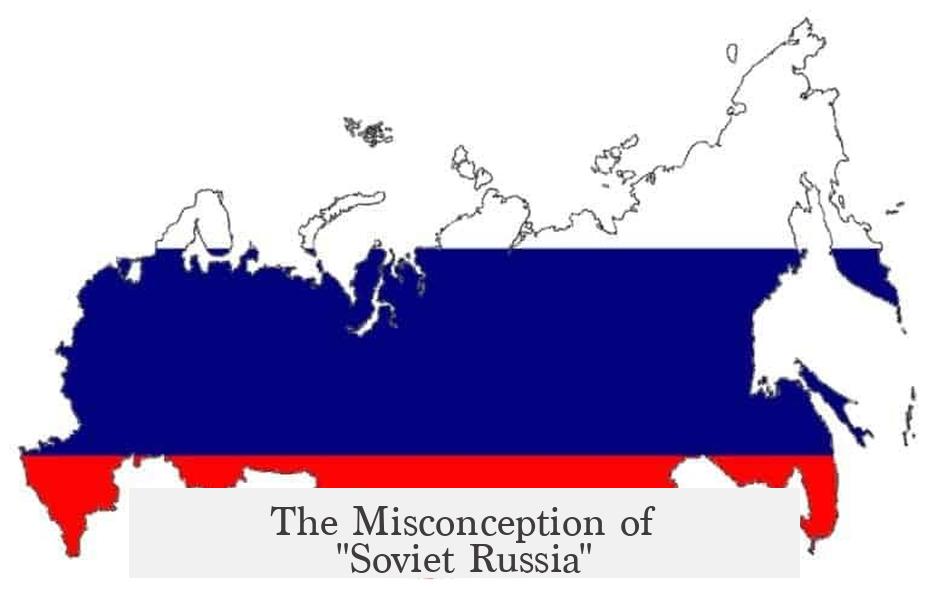
During the Cold War, Western commentators popularized the phrase “Soviet Russia.” This term suggested the USSR was just a new Russian Empire, ruled by a chauvinistic Moscow elite. This narrative served political aims—casting the USSR as the bad guy, a sort of Russian carryover dressed in communist red. It was simple and catchy but misleading.
Fast forward to today, and historians with access to archives and new research find that the “Soviet Russia” label is far too simplistic and often outright wrong. It sidesteps the real struggles and policies around ethnicity that defined Soviet governance. Using “Soviet Russia” without nuance today feels more like a lazy echo of Cold War talking points than a serious historical insight.
In fact, if you hear someone say “Soviet Russia” casually in 2018 or later, it’s often a red flag. It suggests they might not fully understand the complex nature of the USSR, or they rely on outdated stereotypes rather than solid evidence.
So, What Does This Mean for Understanding Russia Today?
Russia is the largest successor state to the Soviet Union but represents just one piece of the puzzle. The USSR was more a federation of ethnic republics and bureaucracies than a single, unified Russian empire. Recognizing this helps clarify many modern debates—not only about history but also about culture, identity, and politics in the post-Soviet space.
Next time the terms get mixed up, ask yourself: Is this about a multi-national empire juggling dozens of ethnic groups, or about one country with its own history? Understanding the difference can lead you to deeper insights about the past and present of Eastern Europe and Central Asia.
To Sum Up:
- The USSR was a complex federation of republics based on ethnic lines.
- Russia, or the RSFSR, was only one republic among many in the USSR.
- Great Russians were a large but not majority ethnic group within the USSR.
- The Soviet Union promoted ethnic diversity through policies like indigenization.
- “Soviet Russia” is a misleading term, often used during the Cold War for political reasons.
In the end, the Soviet Union and Russia are related, but they are definitely not interchangeable. Confusing the two? That’s like mixing up the entire United States with just California—sure, California’s big, but there’s a whole lot more in the union.
What was the main structure of the Soviet Union compared to Russia?
The Soviet Union was a federation of republics based on ethnicity. Russia, or the RSFSR, was just the largest republic within this union. The USSR included many ethnic groups, each with its own administrative area.
How did Soviet policies affect ethnic Russians within the USSR?
The USSR promoted native ethnic groups in their republics and sometimes restricted Russian dominance. Policies like korenizatsiia aimed to empower local groups and limit Great Russian influence inside the union.
Is “Soviet Russia” an accurate term for the USSR?
No. The term “Soviet Russia” simplifies the USSR and ignores its ethnic diversity. It was a Cold War-era phrase that wrongly suggested the USSR was just a Russian empire.
Why was the ethnic diversity of the USSR important?
The USSR consisted of many ethnic groups, with Russians making up less than half the population. This diversity shaped Soviet policies and governance, creating a complex political landscape.
How did Soviet supranational entities function across republics?
Institutions like the Communist Party and Red Army operated across all republics, acting as unifying forces beyond ethnic divisions. They controlled politics and resource distribution throughout the USSR.
